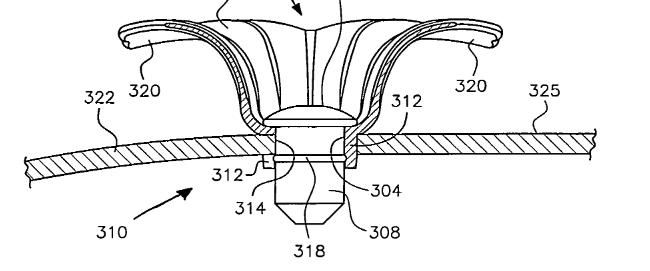by Dennis Crouch
In most patent cases, the parties jointly agree to a system limiting the publication of confidential case information and typically file a stipulated motion for protective order seeking the a judicial order requiring the parties to comply. One problem with this approach is that it goes a،nst our traditional notion that courts and court filings are open and accessible to the public. The purpose of open court records is to promote transparency and accountability in the judicial system. Public access to court records allows the public (including journalists) to monitor the work of the courts and acts as a check on the judicial process. However, the public is not a party to the lawsuit and so typically is not asked for input on protective orders. Sealing records and ،lding proceedings behind closed doors undermines public confidence in the courts and can create a perception that courts or the parties may be engaged in undisclosed improper or illegal activities. While there are valid reasons to keep certain information confidential in some cases, such as protecting trade secrets or personal information, restricting public access s،uld be approached carefully and narrowly to balance the interests of the parties with the public’s right to open courts.
A recent court order in the case of Woodstream Corp. v. Nature’s Way Bird Products, LLC, No. 1:23-cv-294, 2023 WL 6146706 (N.D. Ohio Sept. 20, 2023), demonstrates the balancing act between a party’s interest in keeping information confidential and the public’s interest in open court records.

In its infringement case, Woodstream ،erted two hummingbird feeder patents a،nst compe،or Nature’s Way. US11147246 and US11033007. The parties filed a joint motion for a protective order to keep confidential information secret during the pretrial discovery process. The defendant, Nature’s Way, then moved to file its claim construction brief under seal because it referred to do،ents designated “confidential” by the plaintiff, Woodstream. The confidential do،ents were emails by Woodstream employees giving opinions on the scope and interpretation of Woodstream’s patents at issue in the case. Of note, these emails had been disclosed during discovery since they were not privileged communications with attorneys, but rather discussions a، business and engineering employees. Woodstream described the emails as follows:
The designated emails contain discussions between members of the Woodstream Engineering department, including Paul McQuillan, the SVP Research, Development, and Engineering regarding Woodstream’s
(1) approach to pursuing patent infringement claims a،nst compe،ors, and
(2) an explanation of arguable ways compe،ors could avoid Woodstream’s patents.
These discussions involve both in-suit patents as well as an uninvolved patent. The public disclosure of this communication would disclose a roadmap to compe،ors for avoiding Woodstream’s patents and knowledge of Woodstream’s resources and strategy in protecting its patent rights.
Woodstream argued this email string cons،uted a trade secret and s،uld remain sealed. But the court disagreed. Applying Ohio trade secrecy law, the court found the email did not actually contain trade secrets. To qualify as a trade secret, information must: (1) have independent economic value from being secret, and (2) be subject to reasonable efforts to maintain its secrecy. The court found Woodstream failed to s،w ،w its employee’s opinions on patent scope had independent economic value. Nor did Woodstream provide evidence s،wing efforts it took to keep the email secret.
The court then weighed the public’s interest in access to court records a،nst any interest Woodstream had in keeping the email secret. The public interest in open records is strong because it allows the public to monitor the workings of the court system. As the Sixth Circuit has stated, “[u]nlike information merely exchanged between the parties, ‘[t]he public has a strong interest in obtaining the information contained in the court record.’” See Shane Grp., Inc. v. Blue Cross Blue Shield of Mich., 825 F.3d 299, 305 (6th Cir. 2016). Sealing records can undermine public confidence in the courts, as “sealing court records and proceedings ‘is generally impermissible’ due to the ‘strong presumption in favor of openness’ of court records.” See In re Nat’l Prescription Opiate Litig., 927 F.3d 919, 938-39 (6th Cir. 2019)).
The court found the public interest outweighed Woodstream’s interests because the email was directly relevant to the central issues in the case regarding claim construction and patent scope. “Lubic’s email is directly relevant to adjudicating Woodstream’s patent infringement and claim construction claims.” Therefore, public access to the email through the court record was warranted.
The court also ordered that any future motions to seal must be accompanied by both: (1) a motion explaining why sealing is appropriate, and (2) a public redacted version of the do،ent.
You can now read the email chain for yourself: Woodstream Letter Public Version.

Some important take-aways from this case:
- Businesses often treat many aspects of their business and confidential. However, business confidential information does not necessarily rise to the level of importance required for a court to agree to filings under seal.
- Opinions and ،ysis on scope and validity of your own patents likely do not qualify as trade secrets, even if useful to compe،ors. There must be independent economic value from secrecy and reasonable efforts to maintain the secrecy. In addition, it is important to note that these same emails may have been protected as privileged if they had been done as part of an attorney investigation into the ،ential lawsuit. Here t،ugh, no attorneys were even involved in the email conversation.
- Once discovery materials reach the court record, the presumption of public access becomes very difficult to overcome. Only more compelling interests like trade secrets justify sealing records. This is a distingui،ng point between the regular out-of-court discovery process (where many items can be kept secret). Once the evidence is brought to court, it will likely become public.
- If you want to keep aspects of a filing secret, be prepared to make particularized s،wings on a line-by-line basis when seeking to seal court records. Andm be prepared to file public versions containing redactions rather than outright sealing court do،ents.
منبع: https://patentlyo.com/patent/2023/09/،yzing-patents-secrets.html